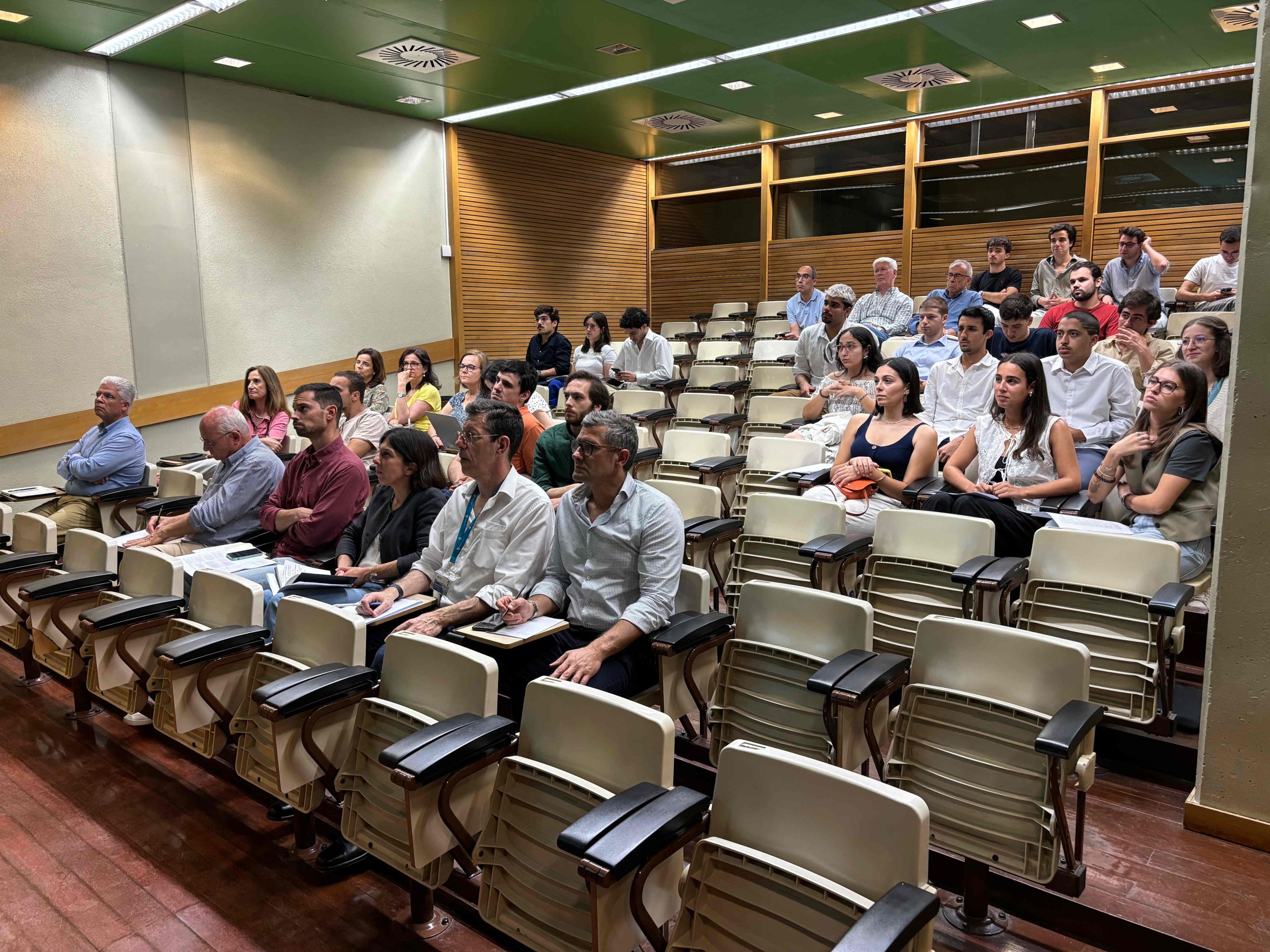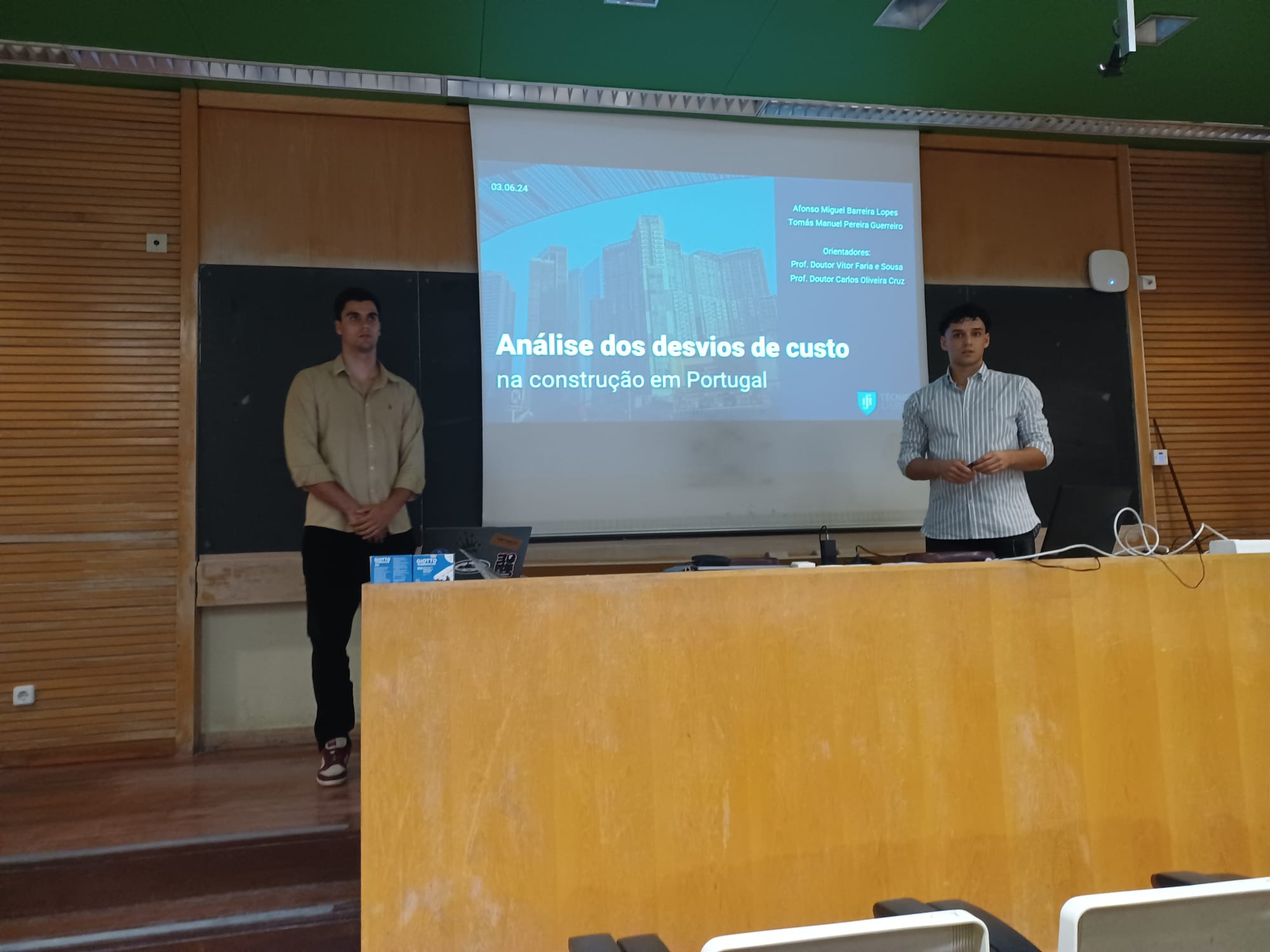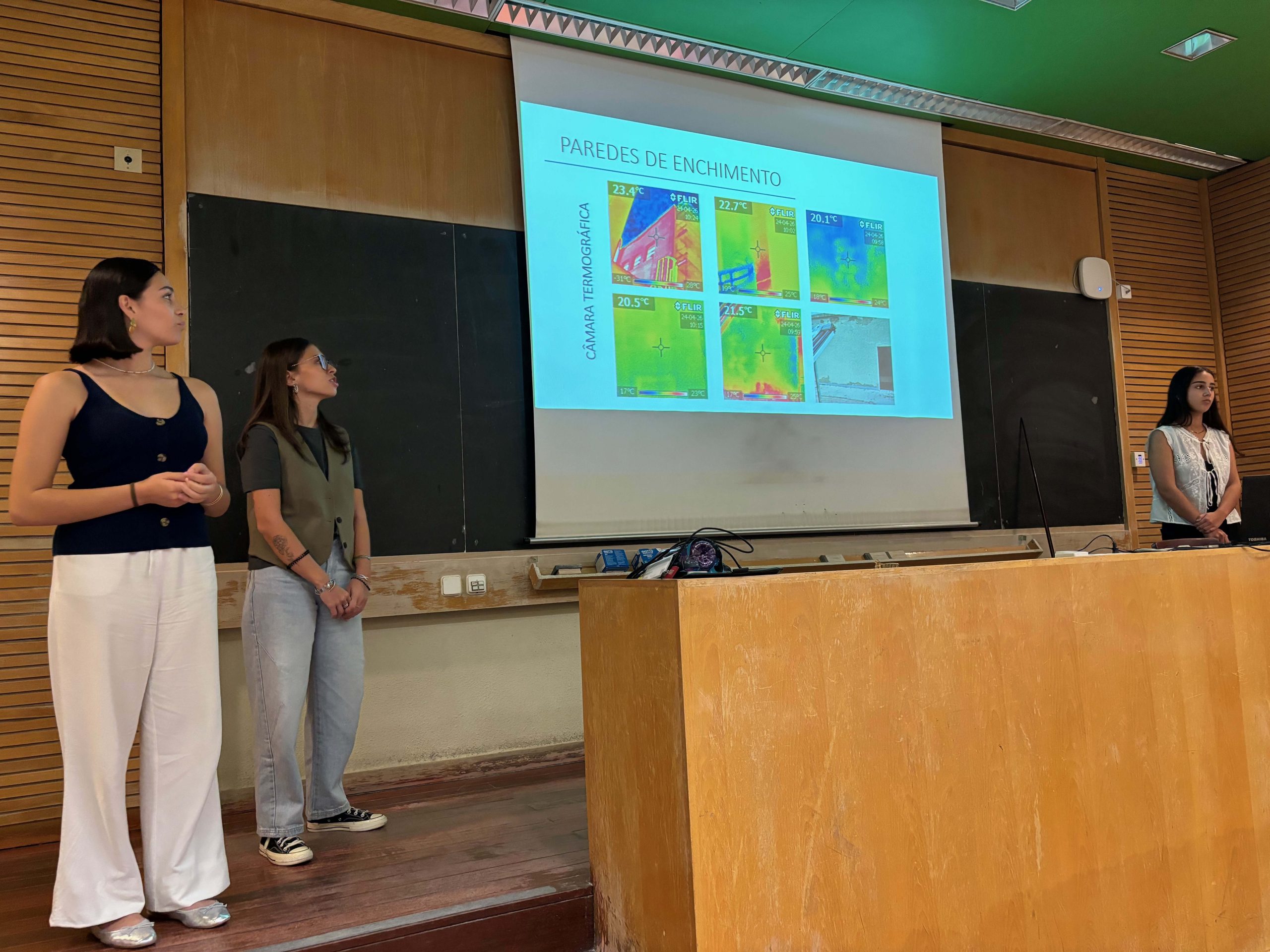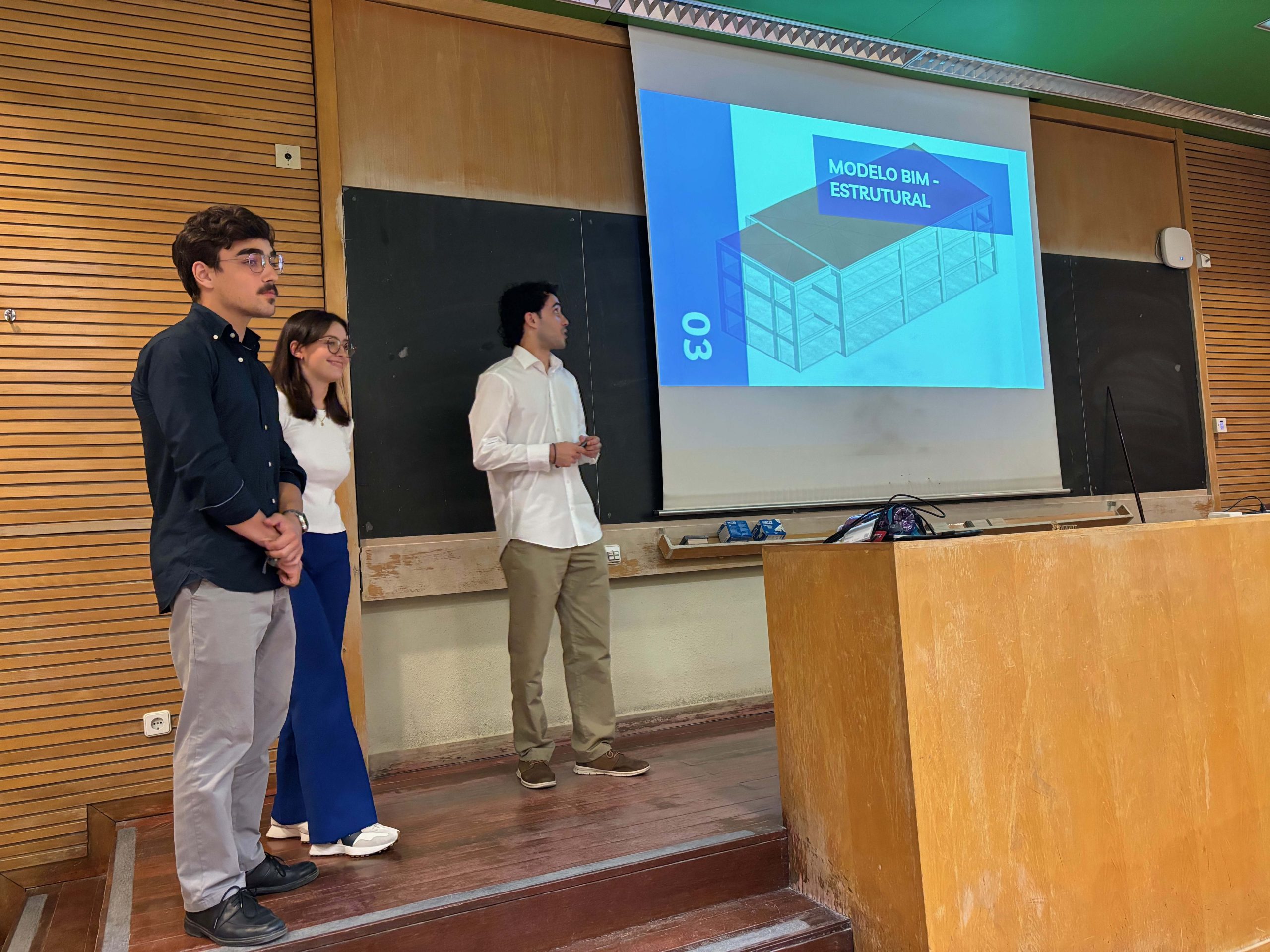Civil Engineering Undergraduates present Knowledge Integrating Projects

On June 3rd, the undergraduate students in Civil Engineering (LEC) presented the Knowledge Integrating Projects (PIC) in which they worked throughout the last semester. There were 61 students distributed in 19 working groups who showed their projects in the most diverse areas of Civil Engineering to the audience at the VA5 amphitheater.
The jury was made up of LEC coordinators and professors nominated by five of the scientific areas of the Department of Civil Engineering, Architecture and Environment (DECivil) of the Instituto Superior Técnico (IST):
- Professor António Sousa Gago and José Neves, LEC coordinators;
- Professor Augusto Gomes, Scientific Area of Construction;
- Professor Jorge Matos (morning) e Diogo Mendes (afternoon), Scientific Area of Hydraulics, Environment and Water Resources;
- Professor Ricardo Vieira, Scientific Area of Structural Mechanics and Structures;
- Professora Teresa Boda Freitas, Scientific Area of Geotechnics.

It was an excellent opportunity to put into practice some of the knowledge acquired throughout my degree and better explore the different areas of Civil Engineering.
João Pedro Gonçalves Pegas
The theme of the Knowledge Integrating Project that I had the opportunity to carry out was: “Design of a pedestrian walkway to connect the Civil Engineering Pavilion to the Técnico central building”. The topic was undoubtedly very interesting as it allowed us to put into practice the theoretical knowledge taught during the Degree in Civil Engineering, especially in the area of structures. This project had the ability to put students outside their comfort zone and also gave them the opportunity to ask questions about the master's degree area they want to pursue. That is, by choosing a topic more focused on that area and also having contact with teachers in the same area, it is possible to make a more informed choice. In my opinion, this initiative should have more weight in the student's final assessment so that they can invest more time in preparing the project. My assessment of this new evaluation method is very positive and I hope it will continue to be implemented in the future.
Inês Oliveira Fonseca
The Knowledge Integrating Project expanded our acquaintance with areas not covered by the degree; It forced us to research scientific, technical, normative and legislative documents, and interpret them. In short, we tested our knowledge, acquired new ones and applied everything to a real case.
Catarina Sofia Alves Salgado Gama Mira
The Integrating Project was a very enriching experience, as it allowed me to gain perspective on what I might do in the future at a professional level, and also due to its strong practical component.
Teresa Rio Pacheco
The works presented were the following:
- Group 1. Analysis of cost deviations in construction in Portugal: Tomás Guerreiro and Afonso Lopes
- Group 2. Design of a pedestrian crossing to connect the Civil Engineering Pavilion to the Técnico Central Building: Paulo Filho, Rafael Nunes and João Borba
- Group 3. Design of a pedestrian crossing to connect the Civil Engineering Pavilion to the Técnico Central Building: Vasco Freitas, David Martyn, Inês Fonseca and Tomás Oliveira
- Group 4. Design and Execution of a Wooden Shelter Prototype: Teresa Pacheco, Vítor Valverde, Guilherme Encarnação, Carlos Fernandes and Valentim Durand
- Group 5. Design and Execution of a Wooden Shelter Prototype: Tchiene Santos, André Gomes, Maria Fortunato and Catarina Mira
- Group 6. Design and 3D printing of an igloo made with soil-cement: Margarida Monteiro, João Pegas, Gonçalo Costa and Maria Fernandes
- Group 7. Study of the economic viability of the real estate operation on the Feira Popular land: João Carvalho, Francisco Longo and Salvador Jorge
- Group 8. Study of the economic viability of the real estate operation on the Feira Popular land: Guilherme Mendonça, Miguel Ribeiro and Miguel Cacheiro
- Group 9. Study of the economic viability of the real estate operation on the Feira Popular land: João Matias, Rafael Barata, Duarte Gomes and Tomás Santos
- Group 10. Introduction to evaluating the structural behavior of an existing building - Case study: Carlota Silva, Camila Araújo and Maria Correia
- Group 11. Introduction to evaluating the structural behavior of an existing building - Case study: Eduardo Duarte, Leonor Ferro and Pedro Semião
- Group 12. Introduction to evaluating the structural behavior of an existing building - Case study: Carolina Martins
- Group 13. BIM modeling of an existing building - Case Study: Manuel Worm, Vicente Marques and Francisco Costa
- Group 14. BIM modeling of an existing building - Case Study: Diogo Carvalho, Marta Ferreira, Tomás Moucho and João Albuquerque
- Group 15. Design of an eco-innovative building: Diogo Jarroca, João Lança and Diana Varum
- Group 16. Design of an eco-innovative building: Carlos Gaitas, João Herédia and Rúben Dias
- Group 17. Tsunami risk in the built environment: José Villa-Nova, Laura Castro and Maria Pyrrait
- Group 18. Tool for predicting the construction method in excavations and peripheral containments: João Silva, António Monteiro and Ricardo Teixeira
- Group 19. Tool for predicting the construction method in excavations and peripheral containments: José Pereira, Artur Silva and Francisco Correia
















DECivil's Executive Committee wishes all the finalists who have completed their PIC the best of luck.
🔗 Biography: https://linktr.ee/decivil
